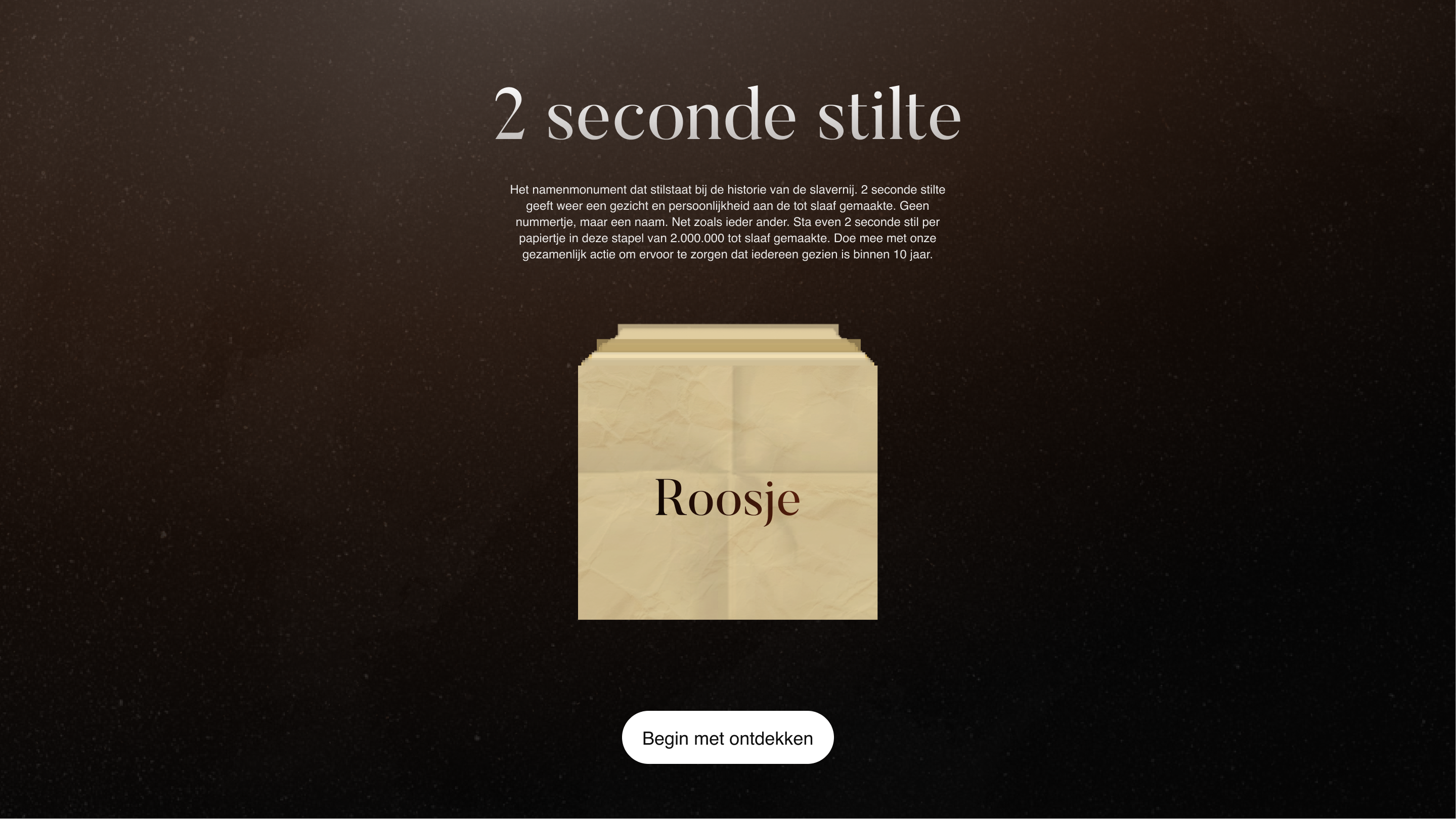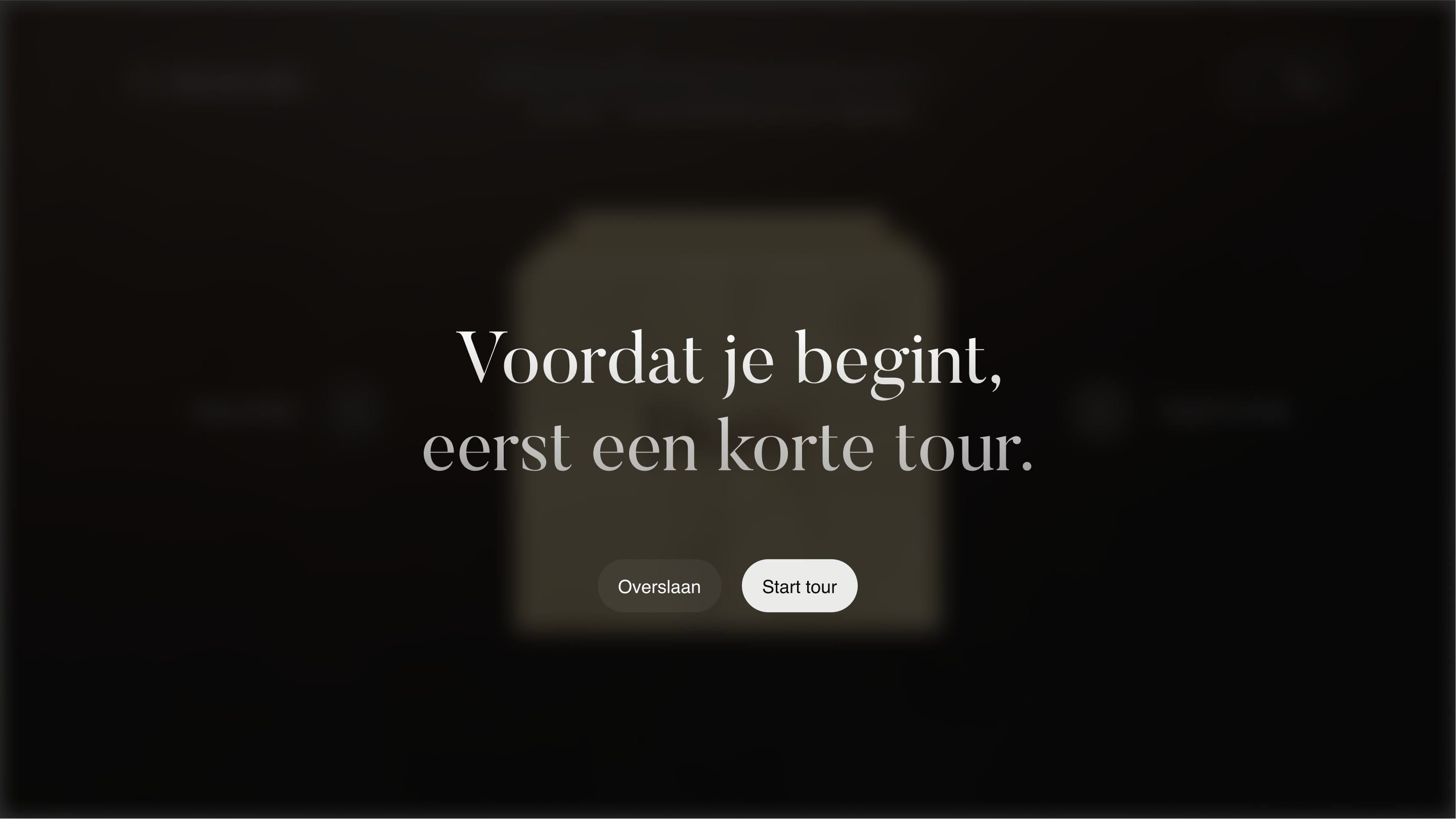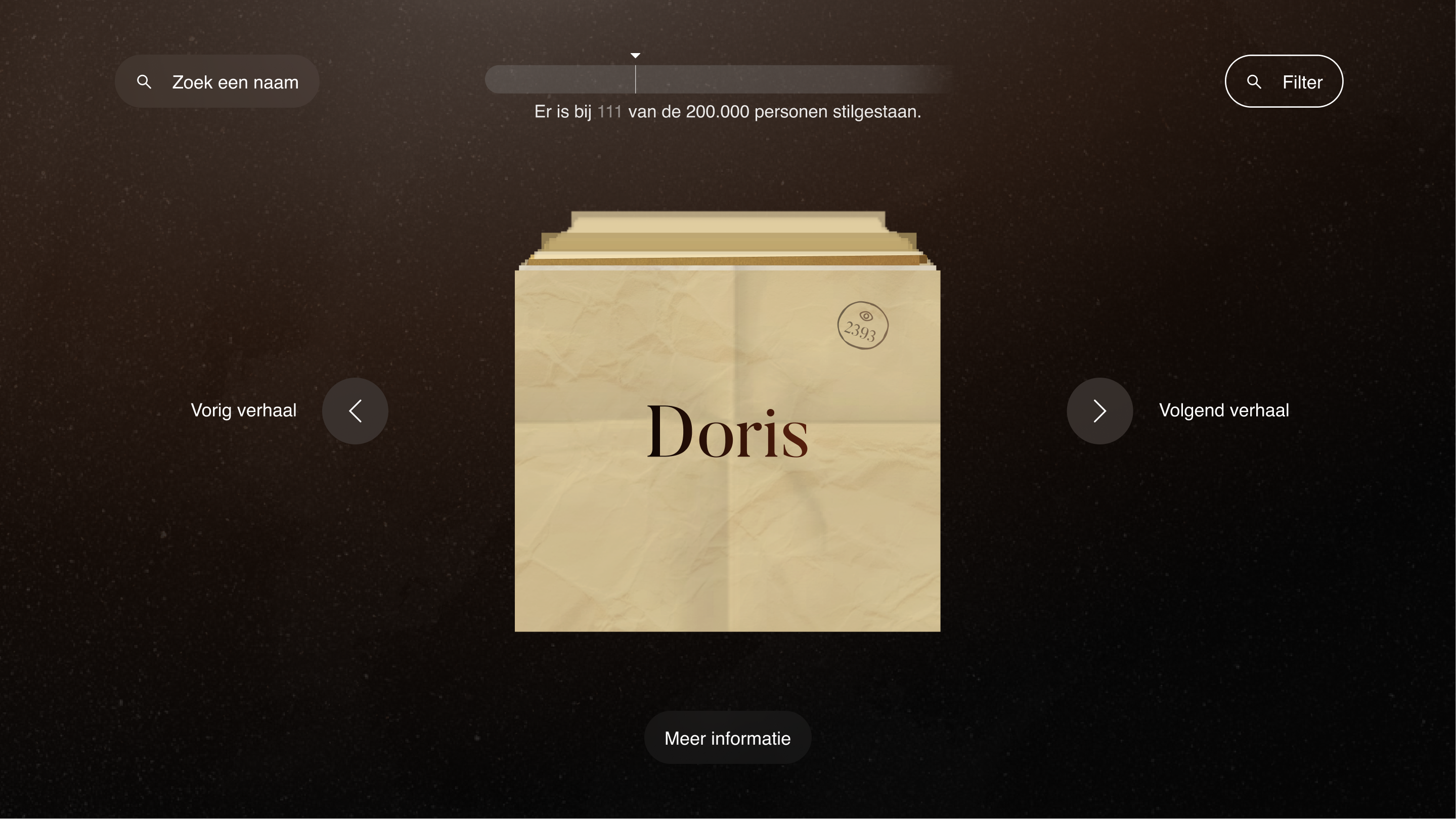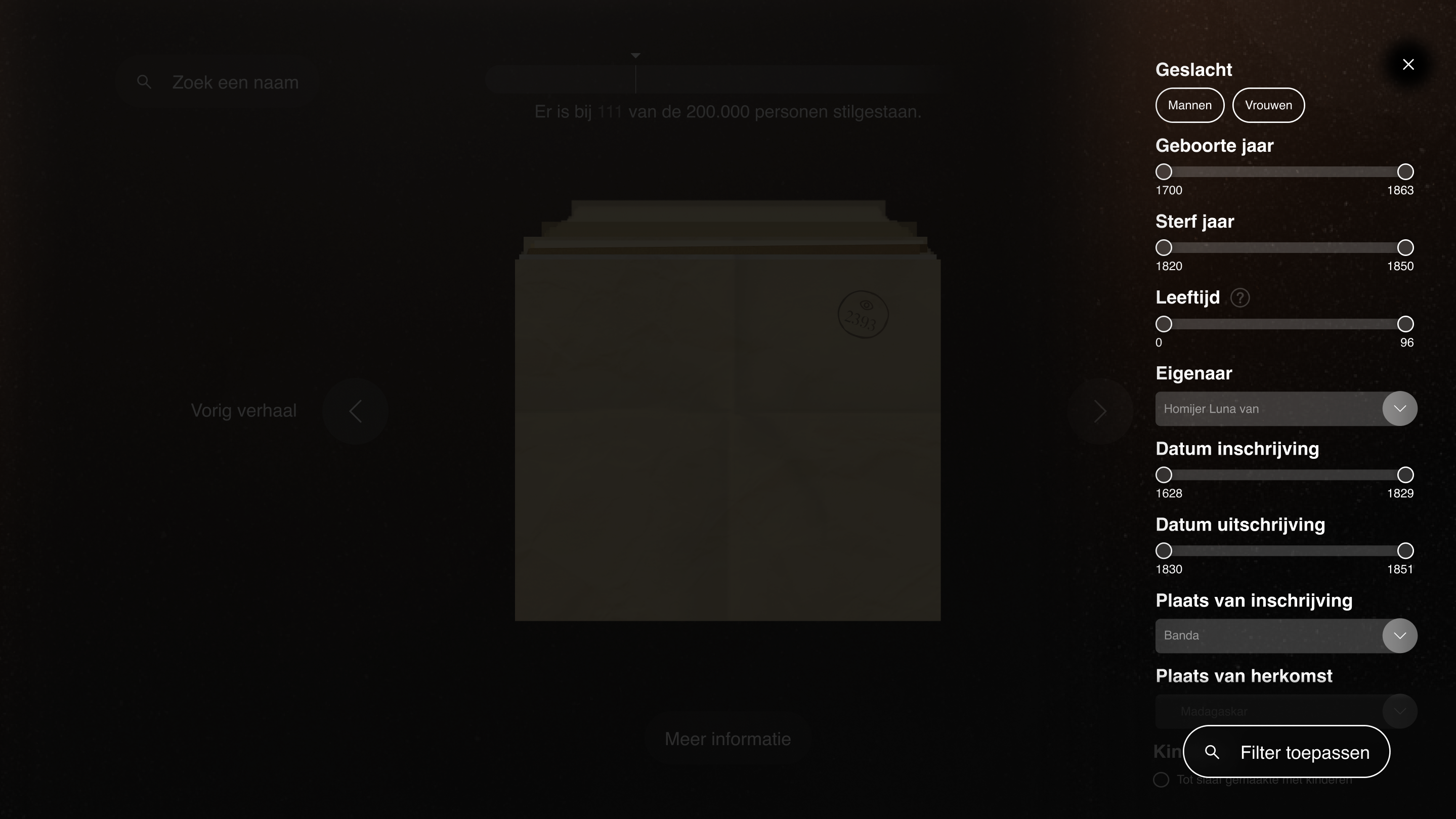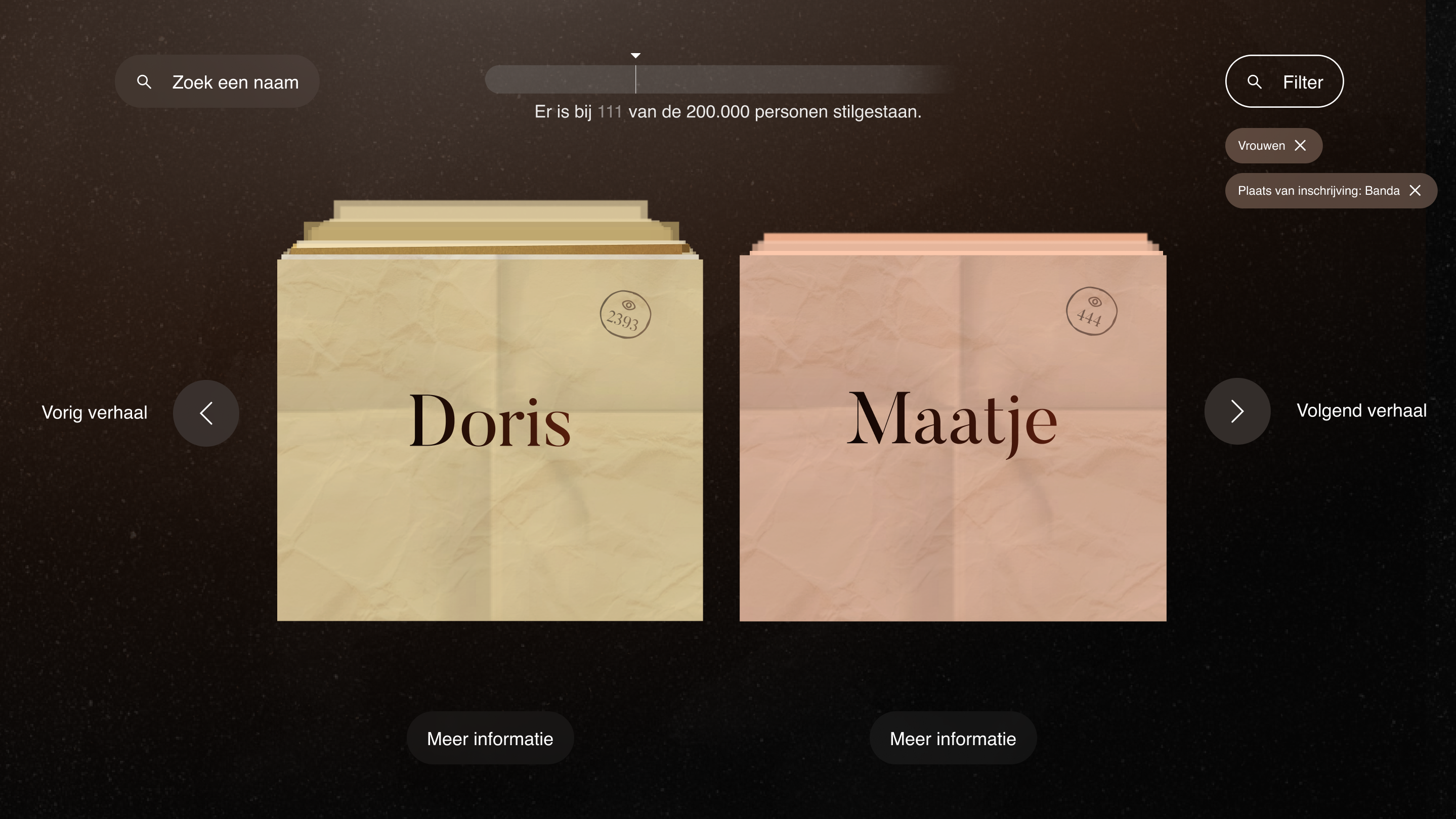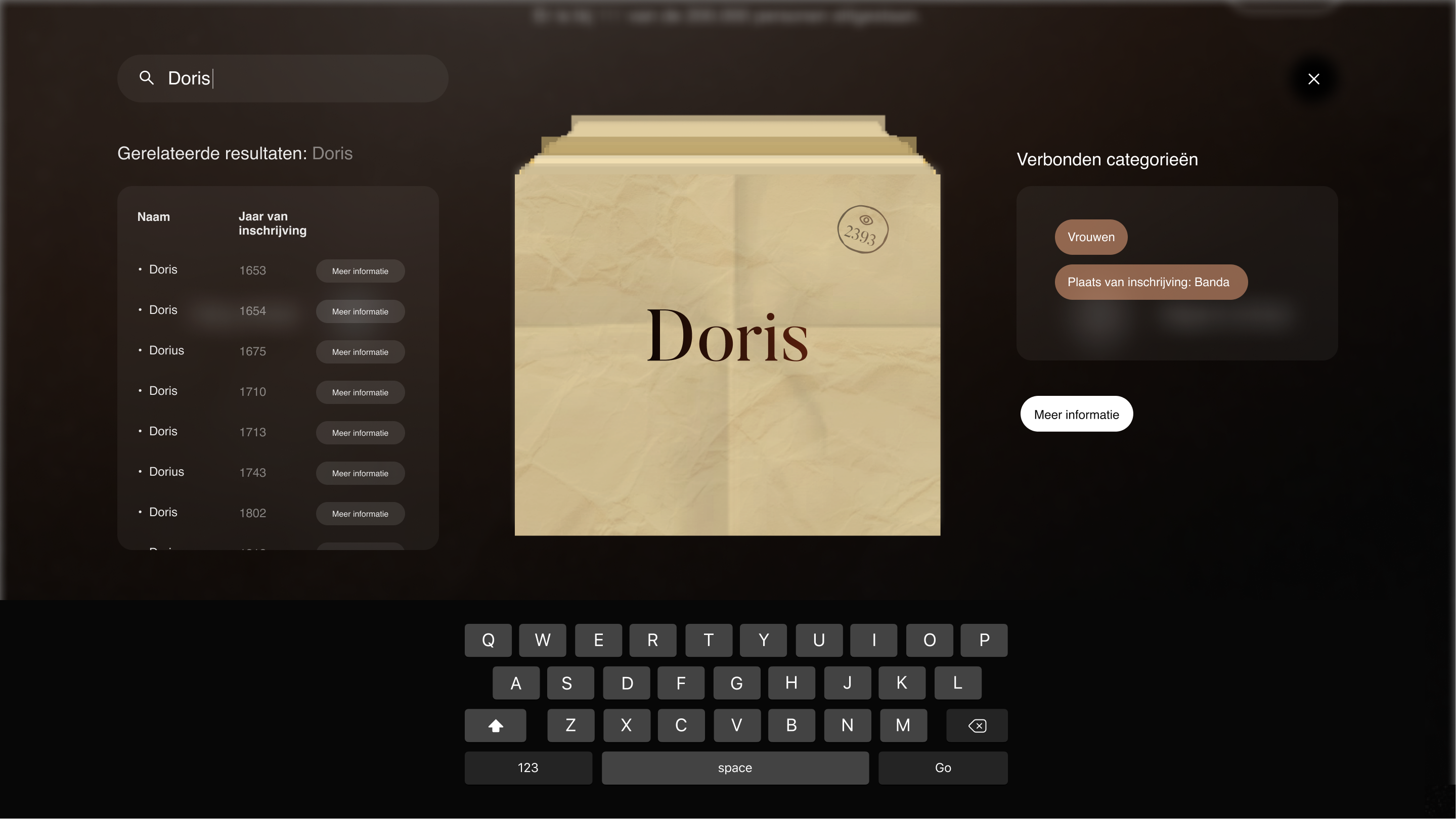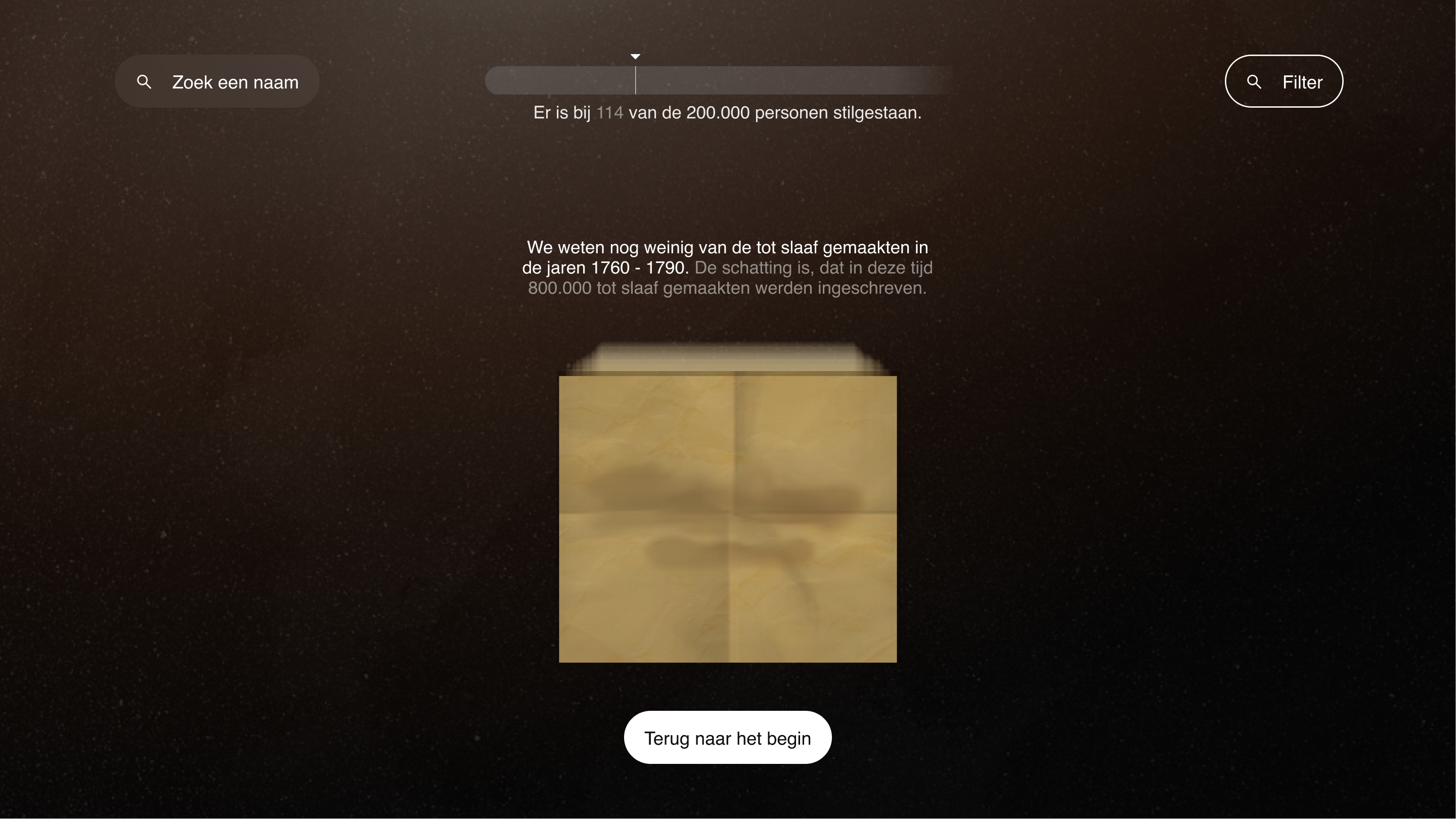Design Challenge
How can a monument-of-names about enslaved, give personality to the enslaved and create a connection with the user at the same time?
Explaining the context
The museum gave us two datasets. One about the foreign Dutch eastern colonies. Which contained data of 4.000 people. And one from the Dutch western colonies. Which contained data of about 160.000 people. Both datasets show the name of every person. More data can be contained, like, year of registration, age or a small note about the persons live.
The monument will be shown on a big screen. This screen consists of 3 projection screens and 3 projectors, which can co-operate to show one big visualization. In front of these 3 projection screens, are standing 3 42-inch touchscreens. Which can be used interact with the monument.
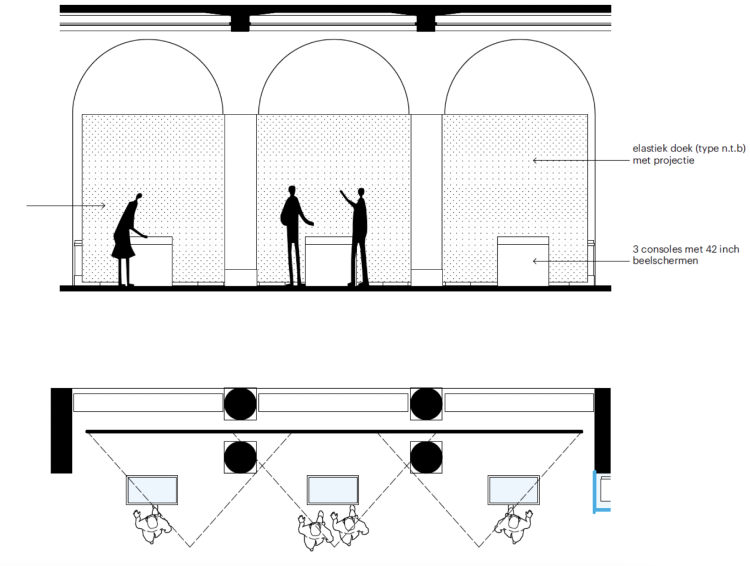
The big screen
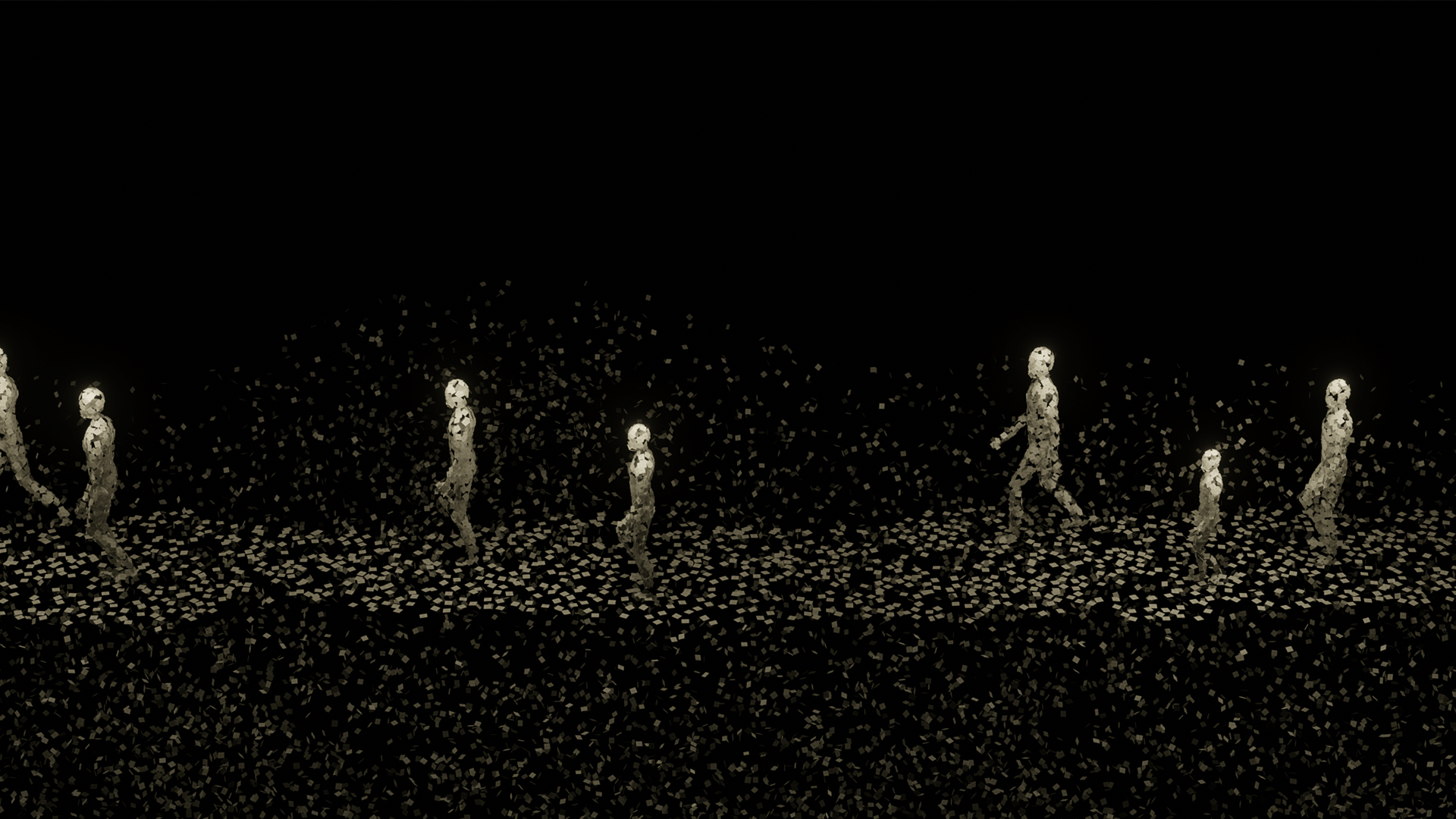
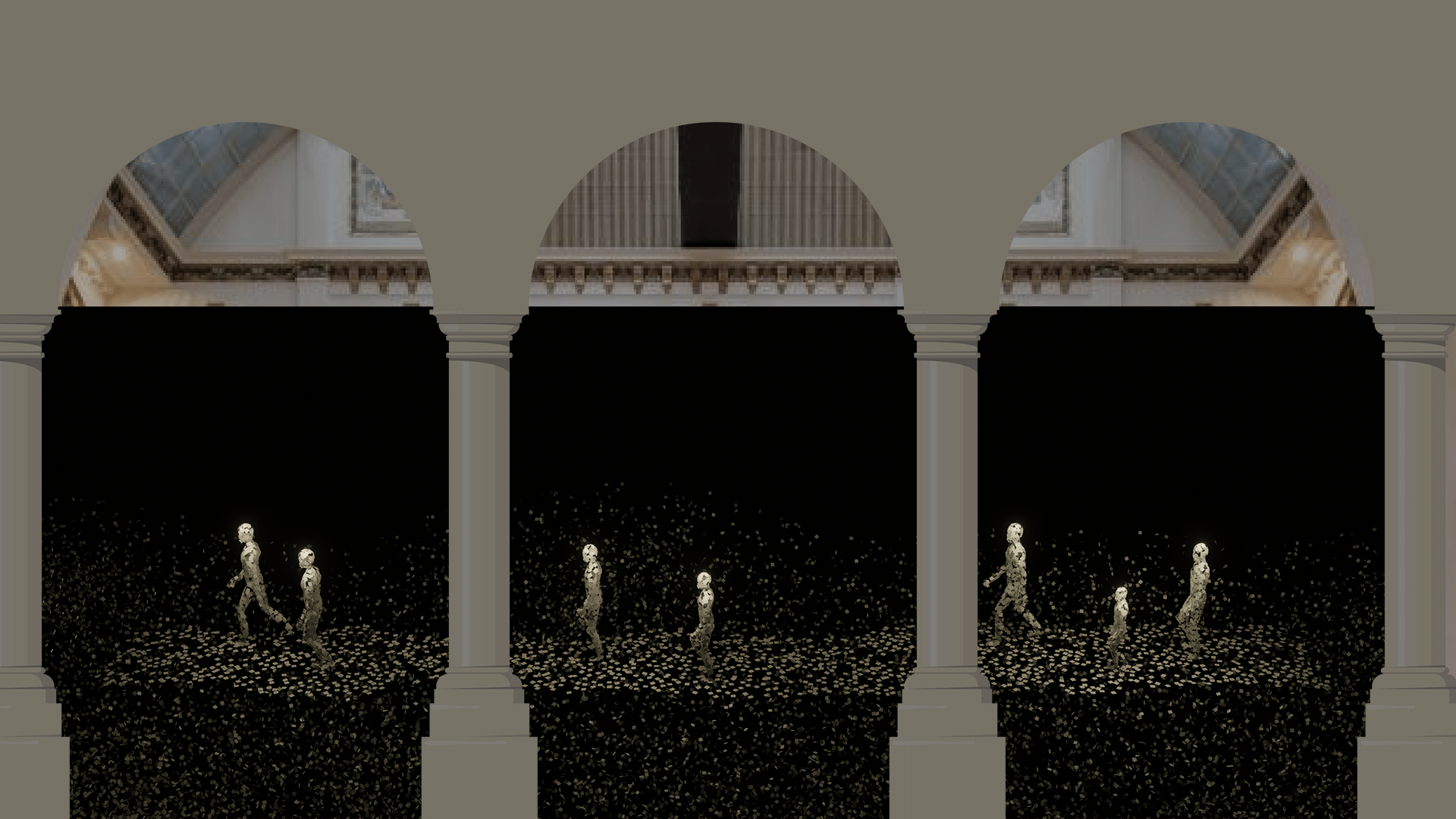
The big screen show an animation in which people walk through a landscape. The whole scene is build of 165.000 peaces of paper. These pieces of paper stand for the people in the datasets.
Every person who walks through the scene symbolizes one of the estimated total of 2.000.000 enslaved by the Dutch.
All these 2.000.000 people will walk through the scene in time span of 10 years.
You will end up with the following calculation if the animation plays 10 hours a day:
60 minutes x 10 hours = 600 minutes a day. 600 minutes x 365 days = 219.000 minutes a year. 219.000 minutes x 10 years = 2.190.000 minutes per 10 years. 2.190.000 minutes / 2.000.000 = a estimated 1 minute and 6 seconds.
So one person will have 1 minute and 6 seconds to walk through the whole scene, if the animation plays 10 hours a day.
The touchscreens
The touchscreens will show the etimated 165.000 names from the datasets. The user can scroll through the names. If the user looks at a name for 2 seconds, the person will be marked as seen. There is a progress bar at the top of the screen. When a person is seen, which wasn’t seen before, it will be added to the touchscreen.
Feel the interaction yourself.Interactive prototype, Dutch
The stories
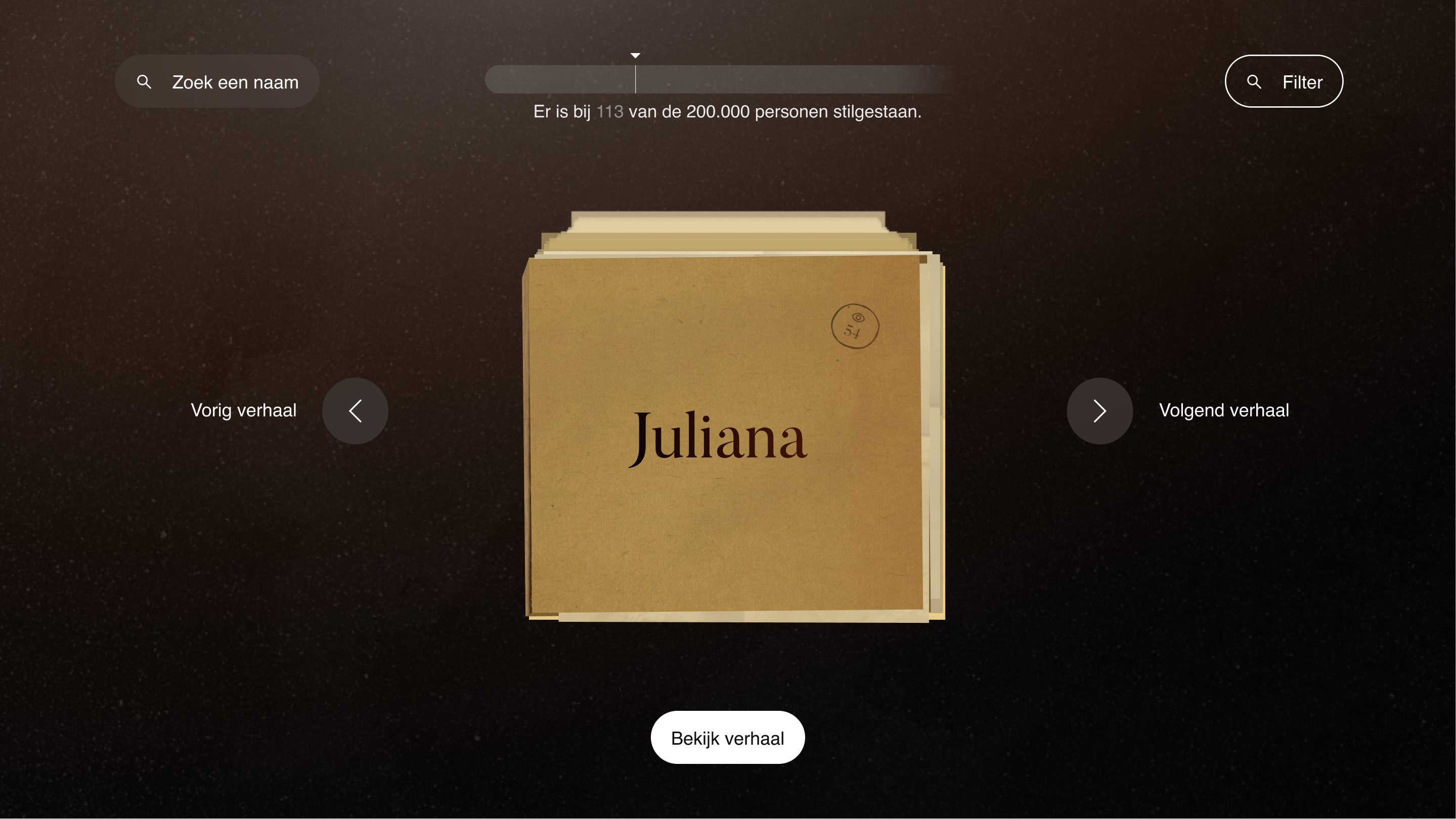
Within those 165.000 names shown on the touchscreen, are more extensive stories about a certain enslaved people. The user can find these stories by scrolling through the pile of names. Or by using the buttons on both opposite sides of the pile.
The stories are presented to the user by scrollytelling. Which means that more of the story reveals itself when the user scrolls through it.
Interaction
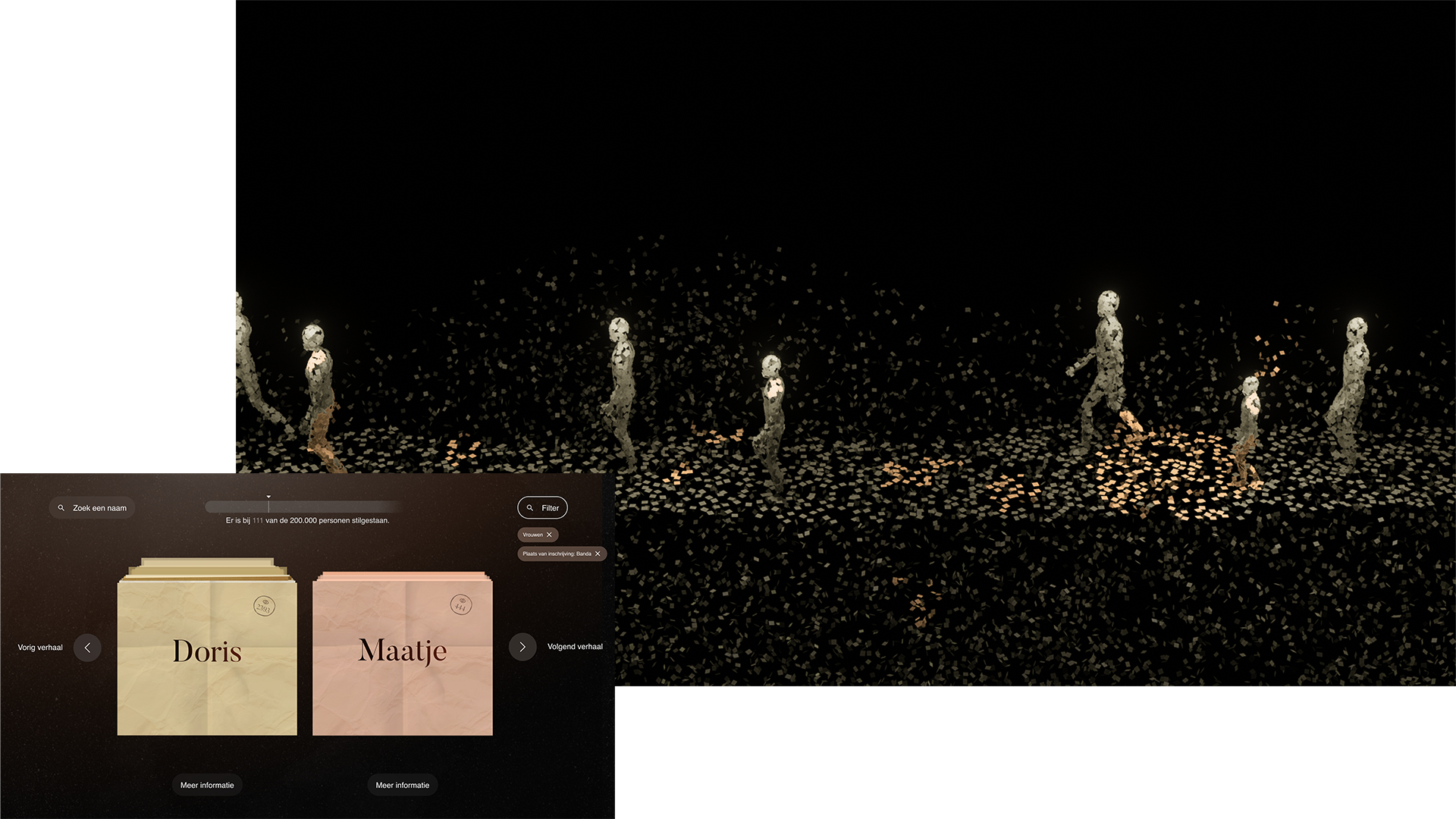
The big screen will show the pieces of paper that fit in to the filter that is used on the touchscreen. Because the pieces of paper on the touchscreen are the same pieces of paper that are shown on the big screen.
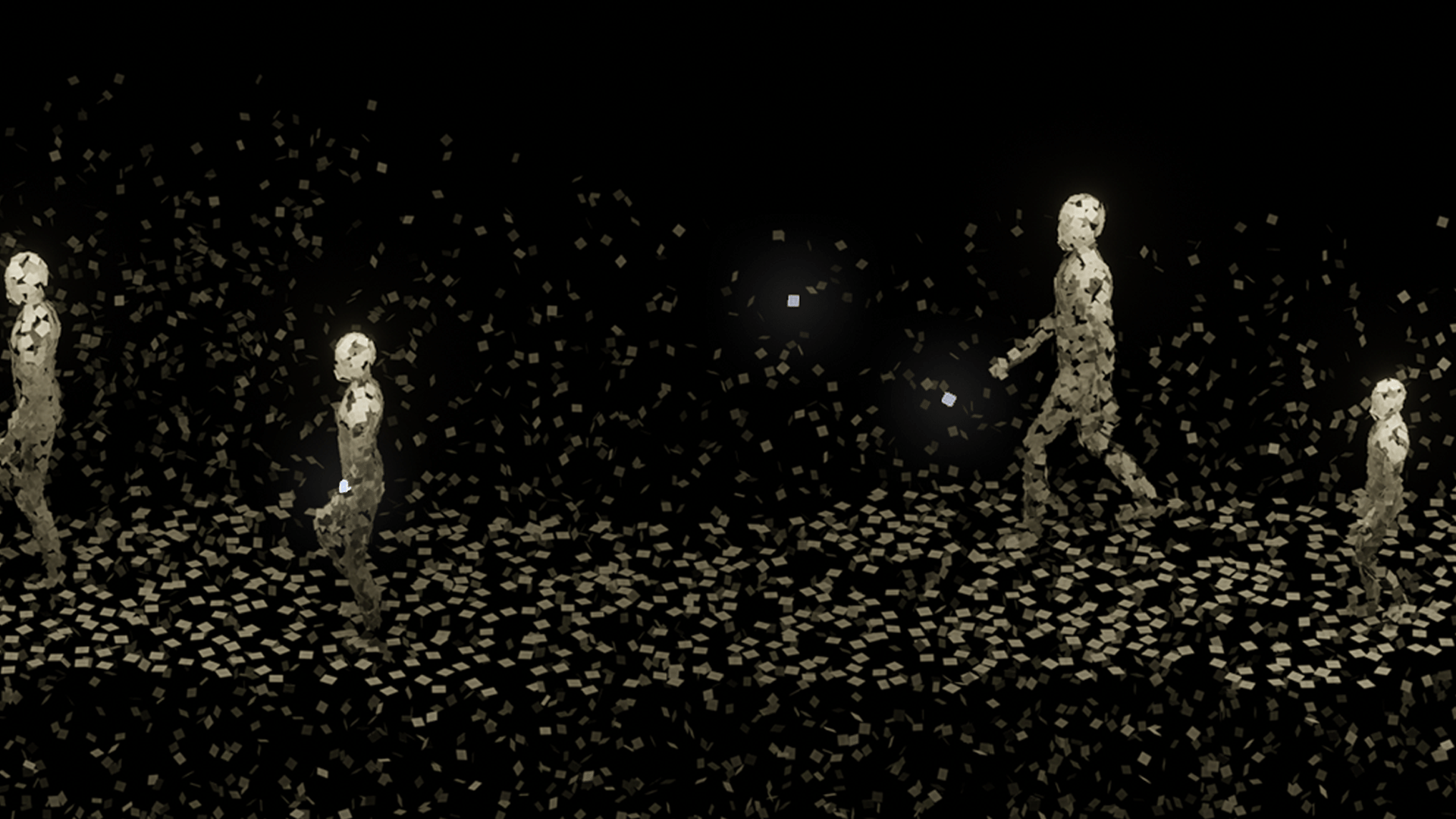
If the user looks at a name on the touchscreen for 2 seconds, the same piece of paper will be highlighted on the big screen. This could happen for all of the 3 touchscreens similtaniously, which will lead to 3 highlighted pieces of paper on the big screen.
